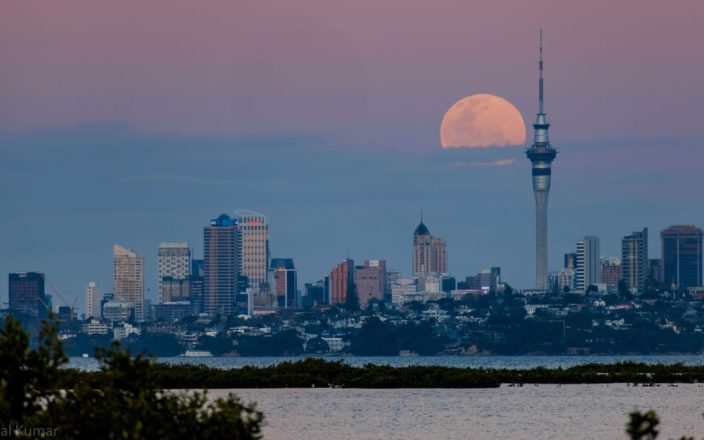Một siêu trăng cá tầm sẽ được nhìn thấy ở New Zealand vào tối thứ Ba, nếu thời tiết tốt.
Jonathan Green, một nhiếp ảnh gia thiên văn với 15 năm kinh nghiệm, sẽ quan sát mặt trăng tại Đài thiên văn Kumeu. Mặt trăng cá tầm “xanh” sẽ mọc vào khoảng 6 giờ chiều. Mặc dù nó được gọi là “mặt trăng xanh”, nhưng nó sẽ không thực sự có màu xanh lam; tên có nghĩa là có nhiều trăng tròn trong một tháng. Green nói rằng đó sẽ là một cảnh tượng đặc biệt.
Nếu bạn muốn chụp ảnh, Green đưa ra một số lời khuyên. Chỉ sử dụng điện thoại di động có thể khó khăn. Ông đề nghị sử dụng kính thiên văn với điện thoại của bạn bằng cách tập trung vào mặt trăng thông qua thị kính của kính thiên văn. Bằng cách này, mặt trăng sẽ trông lớn hơn trong hình ảnh của bạn.
Một ống kính tele cũng có thể giúp làm cho mặt trăng trông lớn hơn so với các vật thể phía trước nó. Chụp được những bức ảnh đẹp phụ thuộc vào thời gian; chụp ảnh khi mặt trăng mọc hoặc lặn có thể thêm các chi tiết tiền cảnh thú vị. Màu xanh lá cây cảnh báo không nên phơi sáng quá mức ảnh của bạn vì mặt trăng rất sáng. Ông cũng khuyên không nên sử dụng đèn flash và khuyên bạn nên sử dụng cài đặt thủ công trên máy ảnh của bạn.
Đối với máy ảnh DSLR hoặc máy ảnh không gương lật, một chân máy chắc chắn là điều cần thiết, Green nói. Mayank Mrug, một nhiếp ảnh gia thiên văn khác với gần 20 năm kinh nghiệm, sử dụng một chiếc máy ảnh DSLR 10 năm tuổi cho hình ảnh của mình. Ông đề nghị chụp ở độ dài tiêu cự 300mm và tuân theo quy tắc gọi là “Looney 11”, có nghĩa là tốc độ màn trập của bạn phải là 1/11 khi chụp trăng tròn.
Các nhiếp ảnh gia có kinh nghiệm hơn có thể thử một phương pháp xếp chồng, trong đó nhiều hình ảnh hoặc video được kết hợp để hiển thị chi tiết hơn.
Màu xanh lá cây nhấn mạnh thực hành. Chất lượng ảnh của bạn có thể khác nhau giữa các máy ảnh, vì vậy anh ấy khuyên bạn nên thực hành vào các đêm trăng tròn khác.
Cho dù bức ảnh của bạn có xuất hiện như thế nào, chỉ cần ngắm mặt trăng cũng có thể là một trải nghiệm tuyệt vời. Màu xanh lá cây khuyến khích mọi người tận hưởng mặt trăng xanh nếu bầu trời quang đãng.




























































